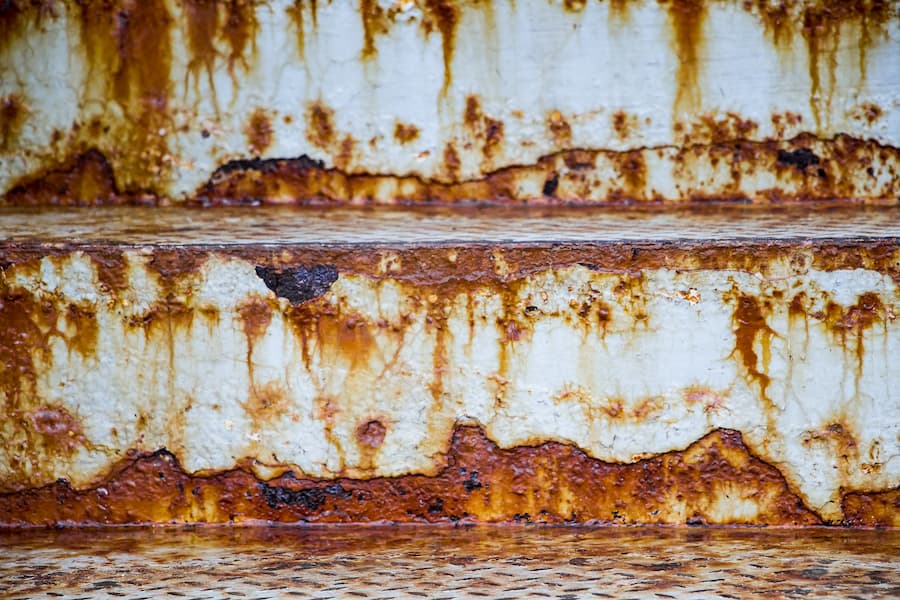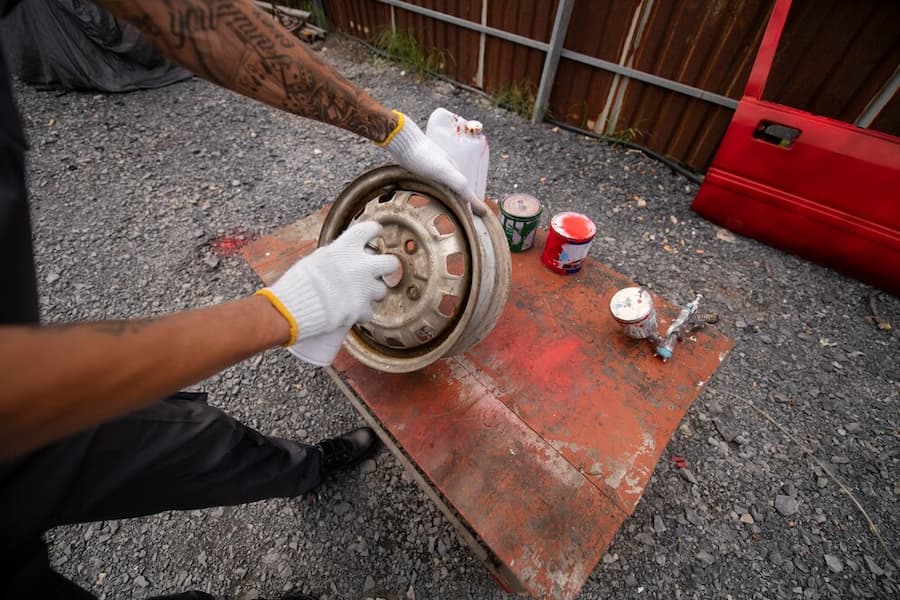No products in the cart.
Benefits of Rust Converter Gel: Effective Rust Remover Gel for Metal Surfaces
August 23, 2024
By Xion Lab
Free Shipping
easy returns
secure paymentS
FAQ | MY ACCOUNT | SUPPORT
August 23, 2024
By Xion Lab
Rust is a pervasive problem for metal surfaces, causing deterioration and compromising structural integrity. Rust converter gel has emerged as a powerful solution in combating this issue. But what exactly is rust converter gel, and why is it so essential?

Rust converter gel is a specialized product designed to address the problem of rust on metal surfaces. Unlike traditional rust removers, which typically scrape or dissolve rust, rust converter gel works through a chemical process that not only removes rust but also converts it into a stable, protective layer. This process halts further rusting and can restore the metal surface to a usable condition.
Rust converter gel is a thick, gel-like substance that contains chemical compounds specifically formulated to address rust. Common ingredients include:
The gel’s consistency allows it to adhere to various surfaces, including vertical and overhead areas, which is a significant advantage over liquid rust removers.
The primary function of rust converter gel is to stop the rusting process by converting the rust into a more stable form. When applied to a rusted surface, the active ingredients in the gel react with the iron oxide to form iron tannate or iron phosphate. This reaction essentially “seals” the rusted area, preventing further corrosion and providing a surface that can be painted or otherwise treated.
Unlike rust removers, which may strip away the rust and leave the metal vulnerable to further corrosion, rust converter gel transforms the rust into a protective coating, effectively integrating the rust into the surface rather than removing it entirely.
The chemical reaction involved in rust converter gel’s application is crucial to its effectiveness. Here’s a simplified view of the process:
To achieve optimal results with rust converter gel, it’s essential to follow the correct application process:

One of the primary benefits of using rust converter gel is its ability to effectively remove and stabilize rust. Unlike mechanical methods that only scrape away the rust, the gel chemically alters the rust, creating a more stable and less reactive surface. This transformation helps to halt the spread of rust and corrosion, making it a valuable tool in metal maintenance.
Another significant advantage is the long-lasting protection provided by rust converter gel. After conversion, the rusted area is covered with a protective layer that helps prevent further rust formation. This protective coating also serves as a primer for paint, improving adhesion and durability of subsequent coatings.
Rust converter gel is highly versatile and can be used on various types of metal surfaces, including:
Additionally, the gel can be applied to different surface orientations, including vertical and overhead surfaces, which makes it a convenient option for diverse applications.
Before applying rust converter gel, it’s crucial to prepare the metal surface properly to ensure effective treatment. Follow these steps for optimal results:
The application process for rust converter gel is straightforward, but it’s essential to follow these guidelines for best results:
Once the rust converter gel has been applied, it’s important to follow these steps:
Many modern rust converter gels are designed to be environmentally friendly. Look for products labeled as non-toxic and biodegradable, which are safer for both the user and the environment. These gels typically use less harmful chemicals and break down more easily in the environment.
Proper disposal of rust converter gel and its packaging is essential for minimizing environmental impact. Follow these guidelines:
2-in-1 Rust Converter is a popular brand of rust remover that is often compared to rust converter gels. Here’s an overview of its effectiveness and user experiences:
When choosing a rust converter gel, it’s essential to compare different products to find the best option for your needs:
Rust remover gel is a specialized product designed to prevent rust and remove it from metal surfaces. It works by penetrating the rust and breaking it down through a chemical process. The gel often contains active ingredients like phosphoric acid or tannic acid that convert the rust into an inert layer, which can then be easily removed. The formula allows it to cling to vertical surfaces, making it highly effective even on hard-to-reach areas.
Yes, rust remover gel is suitable for use on stainless steel. It effectively removes rust while preserving the integrity of the stainless steel surface. Ensure to follow the manufacturer’s instructions to avoid any potential damage. The gel combines the power of 2-in-1 Rust Converter with the ability to protect stainless steel, making it the perfect solution for stainless steel appliances and surfaces.
The time required for rust removal with rust remover gel varies depending on the extent of the rust and the specific product used. Typically, the gel needs to be applied and left on the rusted surface for several hours or overnight, depending on the manufacturer’s recommendations. For heavily corroded areas, multiple applications may be necessary to achieve great results.
Rust converter gel offers several benefits compared to traditional rust removers. Unlike products that only remove rust, rust converter gel also converts the rust into a stable, protective layer, which prevents further corrosion. This dual-action makes it a more effective choice for long-term rust prevention. It’s very easy to use and can save money by reducing the need for frequent applications.
Many rust remover gels are designed to be biodegradable and non-toxic, making them environmentally friendly. Look for products labeled as biodegradable and non-toxic to ensure they have minimal impact on the environment. 2-in-1 Rust Converter users say it is a great choice for an eco-friendly rust remover.
For vertical surfaces, use a rust remover gel that has a good ability to cling to vertical surfaces to prevent dripping. Apply a thick, even layer of the gel to the rusted area. Covering the area with plastic wrap can help the gel remain in place and increase its effectiveness. Allow it to sit for the recommended time as per the product instructions before rinsing or wiping it off.
Rust remover gel can be used on painted surfaces, but it may affect the paint. To prevent damage, protect adjacent areas with masking tape and test the gel on a small, hidden section first. In some cases, it might be better to remove the paint before applying the gel.
If the rust remover gel does not fully remove the rust, you may need to apply a second coat of the gel or use a rust remover soak for more stubborn rust. Ensure the surface is clean and dry before reapplying the gel to improve effectiveness. For heavy rust, consider using a gallon-sized container of rust remover for large surface areas like trailers or railings.
Dispose of unused rust remover gel according to local hazardous waste disposal regulations. Recycle the packaging if possible, following the recycling guidelines provided on the container. Proper disposal helps reduce environmental impact.
After using rust remover gel, protect the metal surface by applying a rust-inhibiting primer or paint. This additional layer helps to prevent future rust formation and extends the life of the metal. Ensure that the surface is completely clean and dry before applying any protective coating. Using a protective primer layer is particularly effective on bare metal and chrome surfaces to revive and protect your treasures.
Rust converter gel offers a comprehensive solution for addressing rust on metal surfaces. By converting rust into a stable, protective layer, it not only removes existing corrosion but also prevents future rusting. Understanding the application process, environmental considerations, and user experiences can help you effectively utilize rust converter gel to maintain and protect your metal surfaces. For those dealing with rust, incorporating rust converter gel into your maintenance routine can lead to lasting improvements and enhanced metal durability.